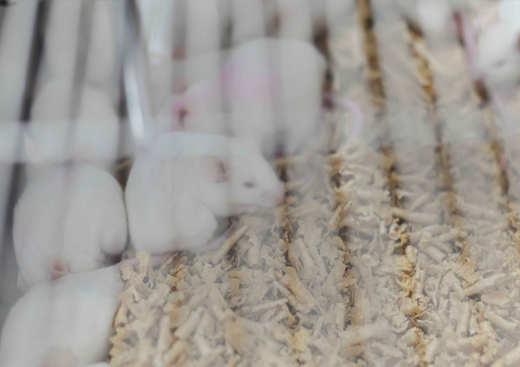 Industry introduction
Industry introduction
Laboratory animals are animals specially cultivated for experimental use, mainly referring to animals that are domesticated, bred and bred for the purpose of scientific research, teaching, medical treatment, identification, diagnosis, and biological product manufacturing in medicine, pharmacy, biology, veterinary medicine, etc. Laboratory animal room refers to a building suitable for raising and breeding experimental animals.
There are different requirements for different levels of experimental animals in the design and management of animal rooms, sterile, known bacteria and animals without special pathogens need to be raised in a sterile or sterile environment as much as possible, this environment, which is currently commonly known as the barrier environment, that is, with a barrier to separate the animal from the surrounding polluted environment, just like the fetal mouse in the womb of the mother mouse.
 Type of environment
Type of environmentIsolation system: It is a system for raising animals in containers with operating gloves, used to raise germ-free animals and habitat animals, and the internal cleanliness level of 100 required by technical microorganisms is maintained, but the room and operators set up do not need to be considered as clean rooms.
Barrier system: The sterile clean room of about 10000~100000 is used as the breeding room, which is mainly used for long-term feeding and breeding of animals without special pathogens. Entering the room is strictly controlled, such as showering, changing into personal clothes, etc
Semi-barrier system: Relax the management of people and objects entering and leaving the room in the barrier system, and the plane composition is roughly the same as that of the barrier system.
Laminar Rack System: The cage is placed in clean, horizontal laminar air. It is often used for small-scale rearing, but there is a risk of contamination when rearing, handling, and handling in general rooms. Can be used as a supplement for semi-barriers.
Open system: It is a system that does not eliminate pollution when people, objects, and air enter and leave the room, but usually requires some degree of cleaning management.
 Type of decontamination
Type of decontaminationVapor hydrogen peroxide sterilization: hydrogen peroxide (hydrogen peroxide) itself is a disinfectant, from the molecular formula of hydrogen peroxide, it can be completely exempted from the suspicion of toxicity or writing, and the sterilization process is low-temperature, low-humidity and fast, which is fully in line with the development direction of future sterilization equipment. Hydrogen peroxide is a high-density oxidant, with the characteristics of exothermic decomposition into water vapor and oxygen, hydrogen peroxide is mainly sterilized by oxidation, and there is no residual toxicity after decomposition, vapor peroxide gas (H202) sterilization is divided into hydrogen peroxide vapor (HPV) sterilization technology and hydrogen peroxide dry mist (VHP) sterilization technology.
Ultraviolet disinfection: The sterilization ability of ultraviolet light changes with environmental temperature, humidity, wind speed and other factors, and the effect is good when the ambient temperature is 20 °C and the relative humidity is 40%~60%; At the ambient temperature of 0 °C, the radiation capacity is less than 60%, the relative humidity > 60%, and the radiation capacity is reduced. In addition, the sterilization ability decreases with the increase of use time, and the average life of UV lamps is about 2000h. In order to obtain satisfactory ultraviolet radiation intensity, the glass tube, reflector and service life of the ultraviolet lamp should be required accordingly. In addition, the radiation intensity of the UV lamp decreases with increasing irradiation distance. Ultraviolet sterilization may cause damage to the human body, such as direct exposure to the eyes, which can cause conjunctivitis or keratitis. WHO and EU GMP stipulate that chemical disinfection should not be replaced due to the limited effect of ultraviolet sterilization; The final sterilization process cannot be sterilized by ultraviolet irradiation.
Formaldehyde fumigation: The traditional method of disinfection of clean room gas is to re-evaporate and disinfect the disinfection wave through evaporation, and the disinfection waves commonly used are ethylene oxide, peracetic acid, formaldehyde solution, etc. Taking formaldehyde fumigation and sterilization as an example, when the humidity is about 65% and the temperature is 24~40 °C, the disinfection effect of formaldehyde is the best, and the principle of disinfection and sterilization is mainly due to the fact that formaldehyde can destroy the active ingredients of the organism and achieve the purpose of disinfection.
Ozone disinfection: Ozone (03) is a toxic, light blue, unstable and extremely strong oxidant with a relative gas density of 1.657. Ozone is a broad-spectrum and highly effective disinfectant with a strong bactericidal and disinfecting effect. Ozone is unstable at room temperature, it is easy to decompose into oxygen molecules and oxygen atoms, oxygen atoms have oxidizing properties, can destroy the cell membrane of microorganisms to kill them, and their excess oxygen atoms will automatically combine into oxygen molecules, and will not produce toxic residues, the raw materials for ozone production are oxygen and electricity, usually produced by ozone generators, ozone is a harmful gas, when the concentration is 6.25x10-6 molL (0.3 mg/), there is a sense of irritation to the eyes, nose and throat: when the concentration is (6.25~62.5)x10-5 mol/L (3~30mg), headache and local paralysis of respiratory organs will occur; When the ozone concentration is 3.125x10-4~1.25x10-3 molL (15~60 mq/), it is harmful to the human body.
 Industry photos
Industry photos

